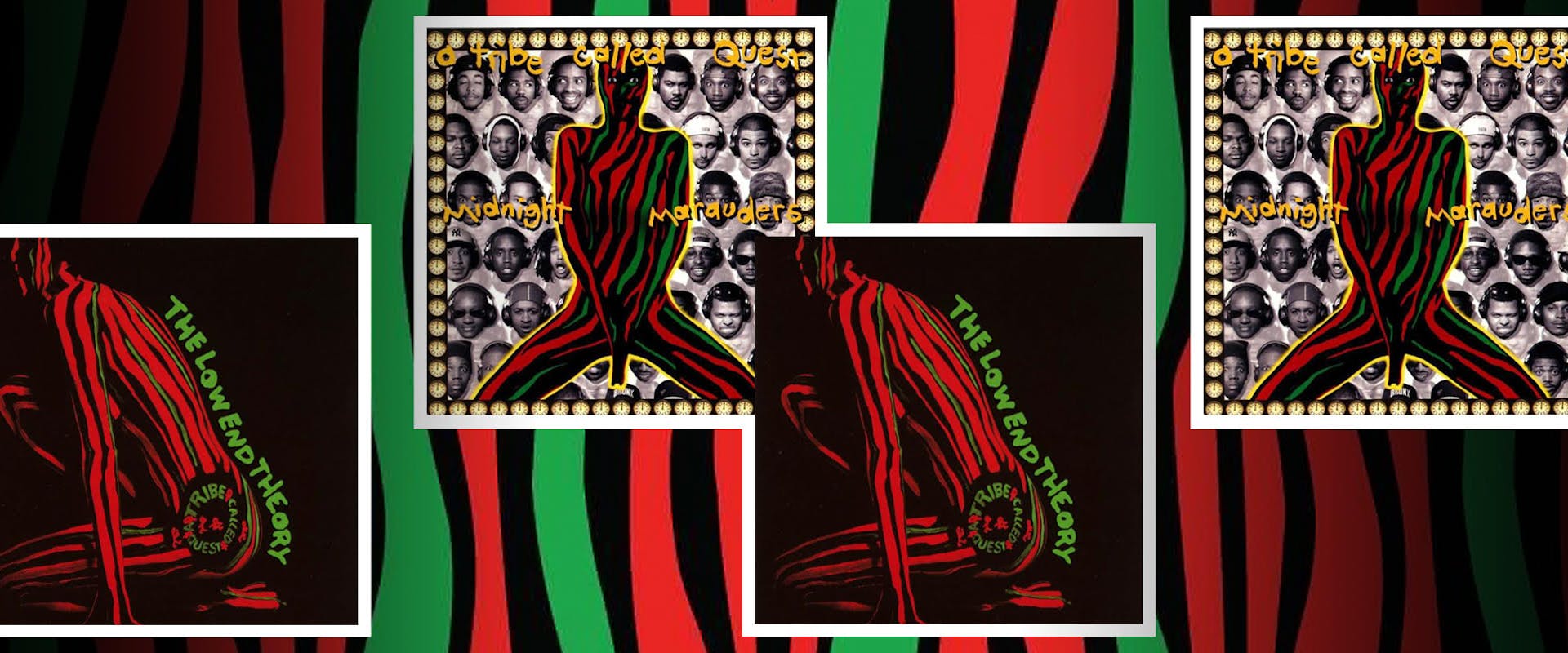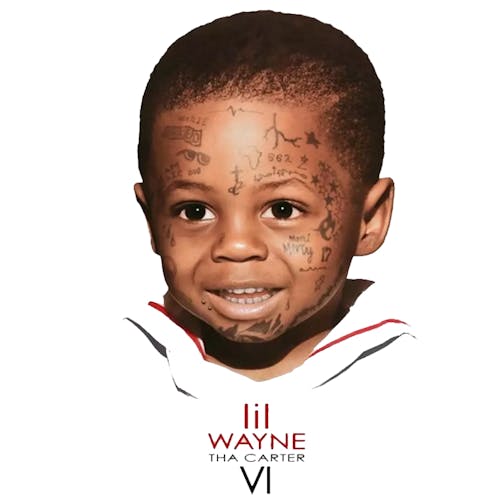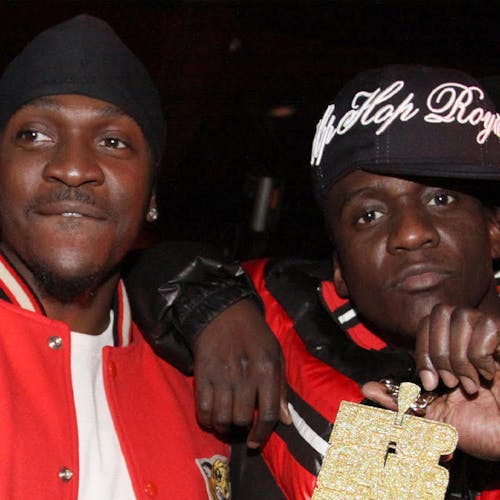


In the early '90s, the art department at Jive Records was bananas.
Spearheaded by mastermind, Jean Kelly, she was supported by two chief creatives: Nick Gamma and Dave Skillken, who were each collectively given credit for their work in a unique way. Jive's parent company, Zomba Recordings LLC, mandated they each be referred to as Zombart JK, Zombart NG, and Zombart DNS in the liner notes. As Gamma explains it, Q-Tip probably had it right on "Check the Rhyme."
"Unfortunately, the record company — as record companies are, particularly then — weren't big on giving credit, particularly for design," Gamma says. "Their excuse was, 'Well if we've got to give you credit, then there's a whole bunch of other people that we have to give credit.' So Jean worked out a compromise, because our argument was that we needed this for our portfolios. We needed this to build our careers and so on. So they decided that they would compromise and this was a compromise. So it was the Zomba art department."
Like engineer, Bob Power, who literally put the "low end" in The Low End Theory, Gamma's path towards Jive Records wasn't necessarily a direct one. However, he knew from a very young age living on Long Island that creating art gave him a powerful feeling that other pastimes didn't.
"As a kid, I was always drawing, and really that's what I loved to do," he explains. "I would spend hours upon hours alone in my room just drawing Kiss logos and [New York] Islanders logos. And then in high school, that really determined my direction with one of my art teachers who became a mentor for me, this guy Nick Cordone, and helped me with my portfolio. I didn't even know what a portfolio was. We were creating logos out of construction paper."
Gamma's passion didn't necessarily jive well with his parents who he admits were nervous about his pursuits. While one might think that Manhattan would be the key to unlocking Gamma's career, he actually found inspiration in his own backyard. Grumman Aircraft and Engineering Corporation resided on Long Island where skilled laborers manufactured fighter planes. However, a chance meeting with someone in their art department made Gamma see that a career in the arts was actually possible.
"I could see that people could do this for a living, so that really inspired me," he says. :And I knew it was either going to be that, or I wanted to be a pediatrician. But then I got to math and chemistry and realized that that wasn't going to work. I love biology and science, but after that I was like, 'Yeah, art. Art it is.'"
Gamma enrolled at the Fashion Institute of Technology in Manhattan. While he wasn't learning the skills to become a doctor, he does admit there is a correlation between caring for the sick, and crafting meaningful art.

"As a designer, we're problem solvers, and that's really what ultimately it is that we do. We're just solving a visual problem. A way of expressing an idea, of a notion, in a visual way."
DROP YOUR EMAIL
TO STAY IN THE KNOW
"So to me, it is similar in that I think that scientists and doctors are problem solvers as well. They're trying to figure out what's wrong, through elimination. Design is the same."
Today, a person in the market for a job might look at a bunch of different websites in search of something that speaks to them. As Gamma was readying to graduate, he stumbled upon FIT's job list which was printed out and jammed inside a binder. In 1989, Gamma was hired as a freelancer at Jive just as the label was starting to establish it's own art department independent of RCA's more established program.
The Low End Theory
In 1990, A Tribe Called Quest had released their debut album, People's Instinctive Travels and the Paths of Rhythm. When it came time to release the follow up, Q-Tip worked closely with Zombart to bring his vision to life.
"Q-Tip, just a genius in many ways, and came to us with this idea," he says. "He was very influenced by the Ohio Players, and wanted to create something like that. He knew he wanted this painted lady. So that's basically where that came from. Jean, vice president of artist development, Ann Carli, developed this idea and hired photographer. They did a photo shoot for the what we refer to as just, "the naked lady," with neon paint and black light. That's when I was brought in."
Gamma's task on Low End was to establish the typography. Both Kelly and Carli were of part Japanese descent, and Gamma noticed that Kelly often had big Sumi brushes and black ink that she loved to work with.
"I started playing with the letter forms, and basically working off the idea of the fact that the previous album, People's, was hand done as well," he says. And it was just a continuation of that kind of thinking, but [asking], 'How would it work within the confines of this painted lady, because that's what I was given. Everything written in the album, everything on the tray, everything on the spines, all of it was all hand done at very large format. Everything has its own voice and distinct character. So when you go through and you select fonts, you select type, you're doing so with an eye towards what it is that you're trying to say. So the same thing is when you're creating your own lettering. Thinking about Afrocentric movement. Thinking about the group themselves. Thinking about what do I feel expresses who they are. Looking at the logo that they had created themselves, the circle The Tribe Called Quest, the stick people, that whole thing comes into play when you're doing this, and I think it's anything. Again, it's problem solving. It's visual problem solving."
Midnight Marauders
When Tribe released their third album, Midnight Marauders, it only made sense to return to the Zombart collective. Once again, the "naked lady" would be front and center on the cover, although, Gamma says this time the new model wore a body suit instead. At the time, the Jive art department was just starting to use Mac computers and photoshop. However, Gamma was once again moved by the same brush techniques he used before.
"[The lettering] started to have more thicks and thins to it, where Low End Theory is chunkier and just a little more just simpler," he says.
While The Low End Theory cover was always relatively the same, Gamma says that the cover we see - featuring the faces and a border using Jean Kelly's actually Timex watch — is actually the third version.
"The original idea from Q-Tip was to have a woman in a loft space in bed with the city outside the window, printed as blue light gleaming in on her naked body," he says. She's wearing headphones and has got a I guess a portable CD player, it's plugged into something. And she is masturbating basically to the album. The idea is at midnight. The big moon in the background. Light. You can visualize it. Light streaming in. That was the initial idea."

"The record company was not down with that."
The second attempt – which was actually photographed during a showy evening — involved the naked, painted lady crossing the street down at the Flatiron building being followed by other Hip-Hop heads all wearing headphones jacked directly into her. Gamma believes Q-Tip was inspired by the 1976 jazz album, Szobel, by Hermann Szobel, which also used the Flatiron building as the prominent background.
"I remember the snow coming down pretty hard and standing on top of the photographers van as we looked down on the scene, because we needed to be above. There actually is film of it somewhere. But that didn't happen and then the third one was where it ended up. And then they set up two photo shoots, East Coast photo shoot and a West Coast photo shoot to get as many people as possible. They reached out to everyone's publicist, every record company, everyone and just said, 'Hey, get your artists to come down on this day and we're doing this shoot for the next Tribe album.' And that's how that came about."



